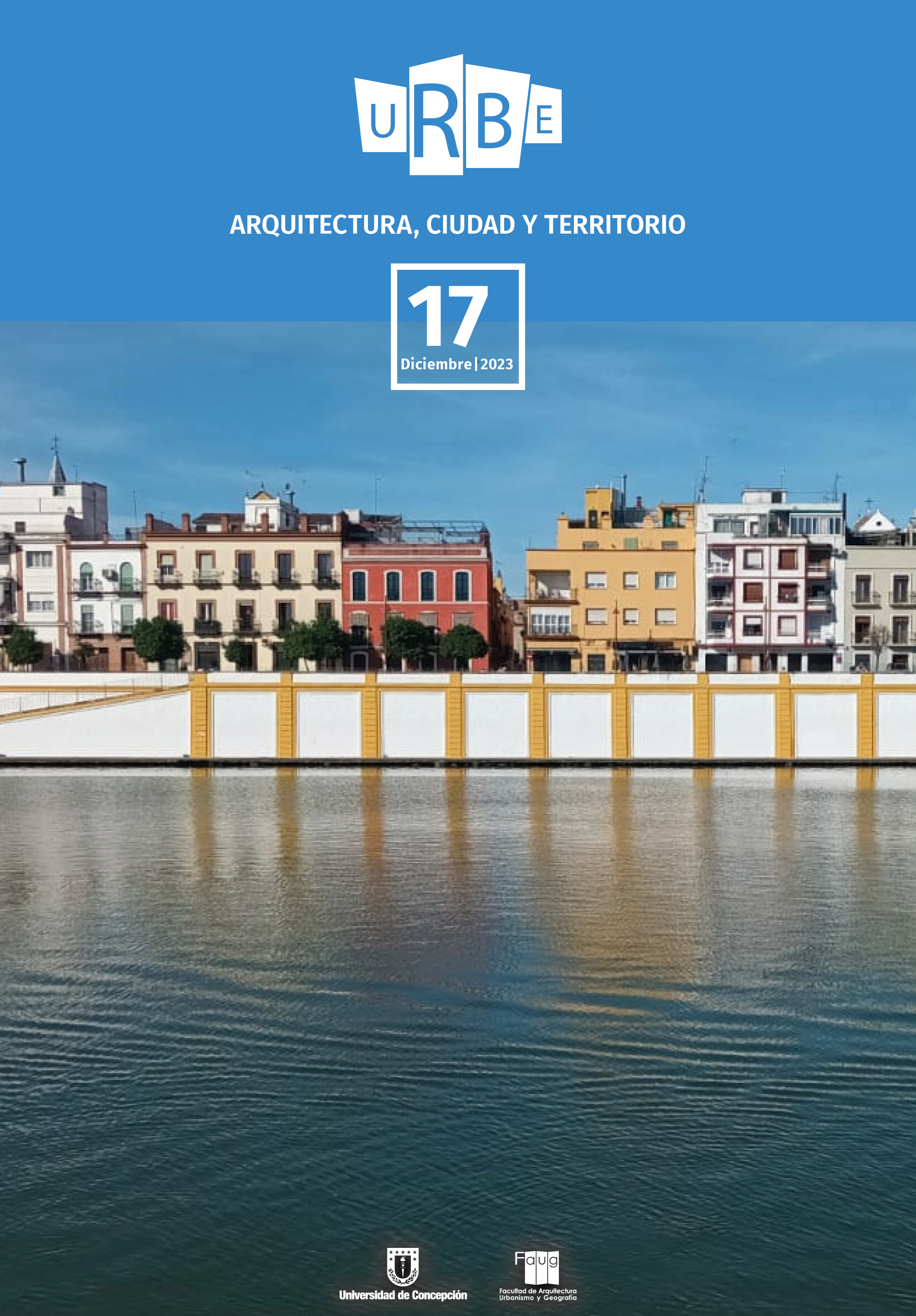Revisiting the concept of space in urban mobility: from positivism to the subject's experience of space
DOI:
https://doi.org/10.29393/UR17-1RCDV10001Keywords:
Mobility, Space, Space object, Urban plotAbstract
Urban studies have understood mobility from diverse and complex points of view and objects of study. However, given the interdisciplinary nature of urban mobility and its complex history of approaches, the understanding and resolution of urban issues has been hindered, preventing the laying of the foundations of a discipline essential for understanding the city. Specifically, the literature understands mobility as part of the city, however, it can be traditionally categorised in different ways and meanings throughout history. This paper is framed within this problematisation in order to contribute to the construction of a theoretical framework based on the historical review of the concept of space in urban mobility. Using a qualitative narrative review methodology (Salinas, 2020), a theoretical analysis is carried out at a historical level in a non-systematic way, the review is developed through the following search engines: i) urban mobility; ii) urban space; iii) history of mobility and iv) urban structure. The structure of analysis corresponds to three main approaches, namely: i) the city as a spatial object or "artefact"; ii) the city as a "system"; and iii) emerging propositions of the dialectical city. The results highlight the role of the built environment and mobility in the notion of the city as spatial object and system. In this way, it is possible to observe that mobility, beyond being considered a synonym of overcoming a distance in space, can also be approached from its potential dimension, also known as mobility capital or the capacity to be mobile in the territory. In this opportunity, the role of the configuration of the built environment together with theorisations of mobility capital can give rise to an understanding of the socially differentiated use of territory and the opportunities - or barriers - created for co-presence and encounter in public spaces.
Downloads
References
Ardura, A. (2011). Jacobs contra Moses, Urbanismo en Nueva York. Arquitectura Viva, 137, 78.
Alexander, C. (1972). The City a Mechanism for Sustaining Human Contact. En: Gutman, R. (Ed) People and Building. 406-434. Basic Books Inc.
Alexander, C. (1977). A Pattern Language: Towns, Buildings, Construction. Oxford University Press.
Almandoz, A. (2020). Reconsideraciones epistemológicas y conceptuales sobre el urbanismo. EURE, 46(137), 135-162.
Blanco, J., Apaolaza, R., Bosoer, L., & Gonzalez, A. (2015). Movilidades, desplazamientos y territorios: algunos aportes para el debate de la gentrificación. Working Papers Serie III. Realidades de procesos de desplazamiento en América Latina: Contested Cities.
Braudel, F. (1967). Civilisation matérielle et capitalisme, XV-XVIII siècles. ArmandColin.
Bourdieu, P. (1999). Efectos del lugar. En: La Miseria del Mundo. Buenos Aires, Fondo de Cultura Económica, [Primera edición en francés, Éditions du Seuil, 1993].
Fournier, J. (2003). Nouvelles temporalités, changements spatiaux et inégalités sociales. L’exemple des villes pétrolières du Casanare (Colombie). En: Cybergeo: European Journal of Geography, Espace, Société, Territoire, document 238. París: s/d.
Erba, V. (1989). Trasformazioni territoriali e infrastrutture di trasporto. Alcunicasi studio nell'area milanese. CLUP.
Flichy, P. (1991). Une histoire de la communication moderne. La Découverte.
Giampietro, G. (1988). La realizione transporti-uso del suolo. Una ressegna dellaletteratura americana. Arkansaschivio di studi urbani e regionali, 33, 156-20
Gómez-Ibáñez, J. (1985). La política de transporte como herramienta para dar formadesarrollo. Research en Economía del Transporte, 2, 55-8.
Hillier, B. (1996). Space is the Machine: A Configurational Theory of Architecture. Space Syntax.
Hillier, B., Penn, A., Hanson, J., Grajewski, T, & Xu, J. (1993). Natural Movement: Or, Configuration and Attraction in Urban Pedestrian Movement. Environment and Planning B: Planning and Design
Hillier, B., & Hanson, J. (1984). The Social Logic of Space. Cambridge University Press.
Jacobs, J. (1961). Muerte y vida de las grandes ciudades. Capitán Swing.
Kaufmann, V., Bergman, M., & Joye, D. (2004). Motility: Mobility as Capital. International Journal of Urban and Regional Research, 28(4), 745-56.
Kaufmann, V., & Audikana, A. (2020). Mobility capital and motility. In: Handbook of Urban Mobilities.
Kellerman, A. (2012). Potential Mobilities. En: Mobilities, 7(1). Routledge.
Lefebvre, H. (1979). La révolution urbaine. Gallimard.
Levy, J. (1993). A-t-on encore (vraiment) besoin du territoire?. In: Espaces Temps, 51(51-52). École Normale supérieure de Cachan.
Levy, J. (2011). La mobilité comme bien public. In: Métropolitiques. Association Metropolitiques
López-Morales, E. (2015). Gentrificación y desplazamiento en América Latina: Tres factores causales concatenados”. En: Working Papers Serie III. Realidades de procesos de desplazamiento en América Latina.
McLoughlin, J. (1971). Planificación urbana y regional. Un enfoque de sistemas. Instituto de Estudios de Administración Local.
Miralles-Guasch, C. (2002). Ciudad y transporte. En Ciudad y transporte: el binomio imperfecto. Ariel. 11-26.
Miralles-Guasch, C. (2003). Movilidad y Transporte. Opciones políticas para la ciudad. Documentos de trabajo, Laboratorio de alternativas, 5.
Oyón, J. (1999). Transporte público y estructura urbana (De mediados s. XIX a mediados s. XX): Gran Bretaña, Francia y Países Germánicos. Ecología Política, 17, 17-35.
Pautasso, M. (2013). Ten Simple Rules for Writing a Literature Review. PLoS Comput Biol., 9(7). https://dx.doi.org/10.1371/journal.pcbi.1003149.
Potrykowsky, M., & Taylor, Z. (1984). Geografía del transporte. Ariel.
Salinas F., M. (2020). Sobre las revisiones sistemáticas y narrativas de la literatura en Medicina. Revista chilena de enfermedades respiratorias, 36(1), 26-32. https://dx.doi.org/10.4067/S0717-73482020000100026
Salomon, JJ. (1992). Le destin technologique. Ballard.
Schmidt-Relenberg, N. (1976). Sociología y urbanismo. Trad. J. Hernández Orozco. Instituto de Estudios de Administración Local (ieal). (Publi-cado originalmente en 1968).
Published
How to Cite
Issue
Section
Copyright (c) 2023 Daniela Villouta

This work is licensed under a Creative Commons Attribution 4.0 International License.
Revista URBE. Arquitectura, Ciudad y Territorio tiene licencia de Creative Commons Attribution 4.0 International (CC BY 4.0) y debe citarse correctamente.









